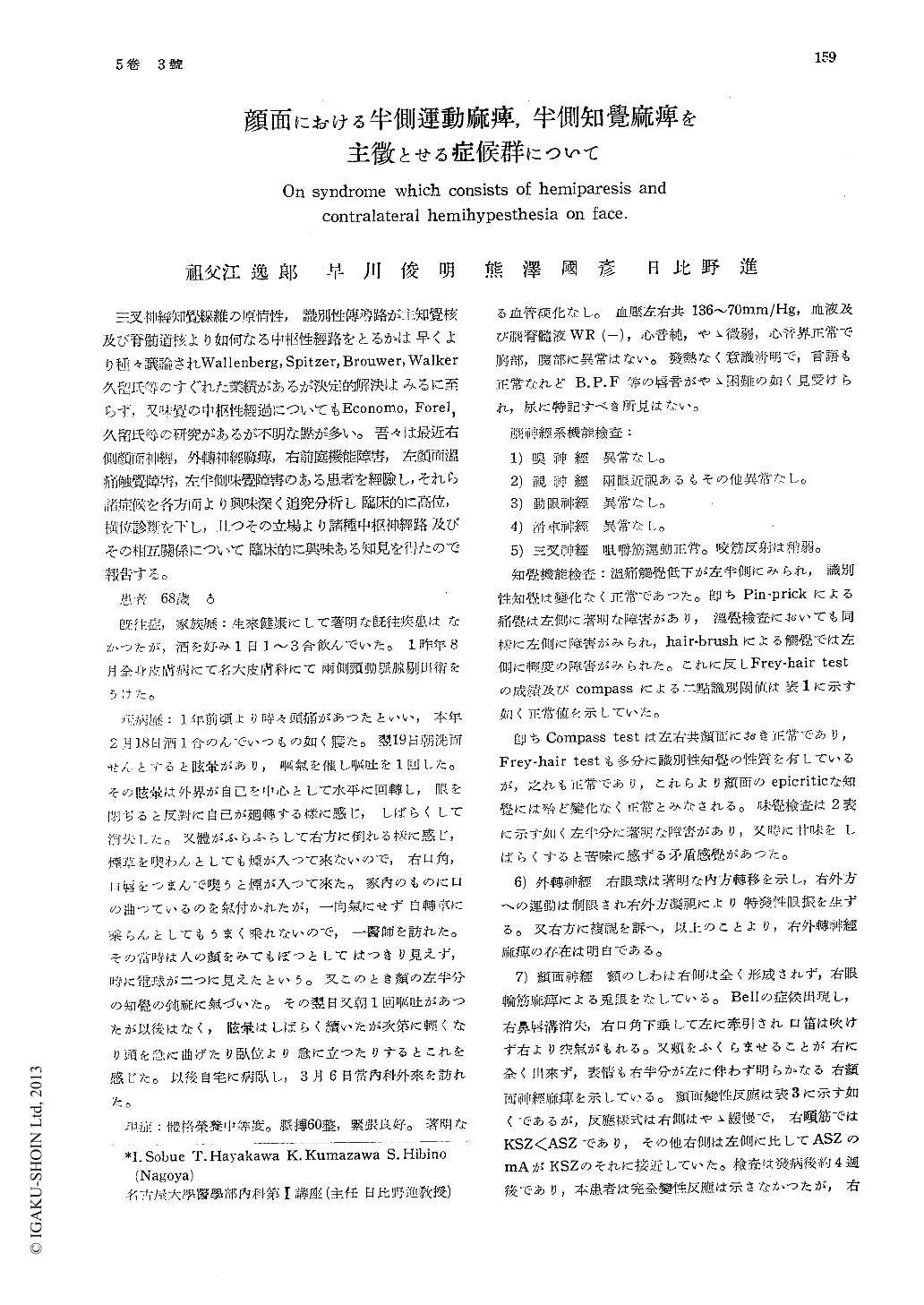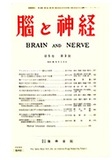Japanese
English
- 有料閲覧
- Abstract 文献概要
- 1ページ目 Look Inside
三叉神經知覺線維の原情性,識別性傳導路が主知覺核及び脊髄道核より如何なる中枢性經路をとるかは早くより種々議論されWallenberg, Spitzer, Brouwer, Walker久留氏等のすぐれた業績があるが決定的解決はみるに至らず,又味覺の中枢性經過についてもEconomo, Forel,久留氏等の研究があるが不明な點が多い。吾々は最近右側顔面神經,外轉神經麻痺,右前庭機能障害,左顔而温痛触覺障害,左半側味覺障害のある患者を經驗し,それら諸症候を各方面より興味深く追究分析し臨床的に高位,横位診斷を下し,且つその立場より諸種中枢神經路及びその相互關係について臨床的に興味ある知見を得たので報告する。
Recently we examined a interesting case hav-ing syndrome as follows;
1) right facial palsy and abducent paralysis.
2) disturbance of vestibular function. (right side)
3) horizontal nystagmus towards right.
4) left hemihypesthesia (pain, touch, tempera-tur) on face.
5) disturbance of taste. (left side)
Analysing above mentioned syndrome, dorso-medial portion of lower pons may be considered as its lesion.
From this case, a certain results concerning to pathways in central nervous system will be drawn out.
1) The central pain fibres of trigeminal nerve (Walker, Kuru) passes inner side of dorso-lateral spino-thalamic tract at the lower region of pons, and theseare separated in this level each other.
2) Dorsal tract (Wallenberg) passes inner side of ventro medial spino-thalamic tract at the lower region of pons, and these are not unit-ed in this level.
3) The central pathway of taste finishes contral-ateral crossing by the lower region of pons, and Nucl. ovalis (Grossmann) may have rela-tion to sense of taste.
4) It seems to be sure that the affection of medial longitudinal fasciculus has a close connection to horizontal nystagmus and the direction of it is towards affected side.
From our observations we concluded that the lesion of dorsomedial portion of lower pons may result in facial abducent paralysis and vestibular dysfunction homolaterally, hypesthe-sia on face and disturbance of taste contral-aterally.

Copyright © 1953, Igaku-Shoin Ltd. All rights reserved.


